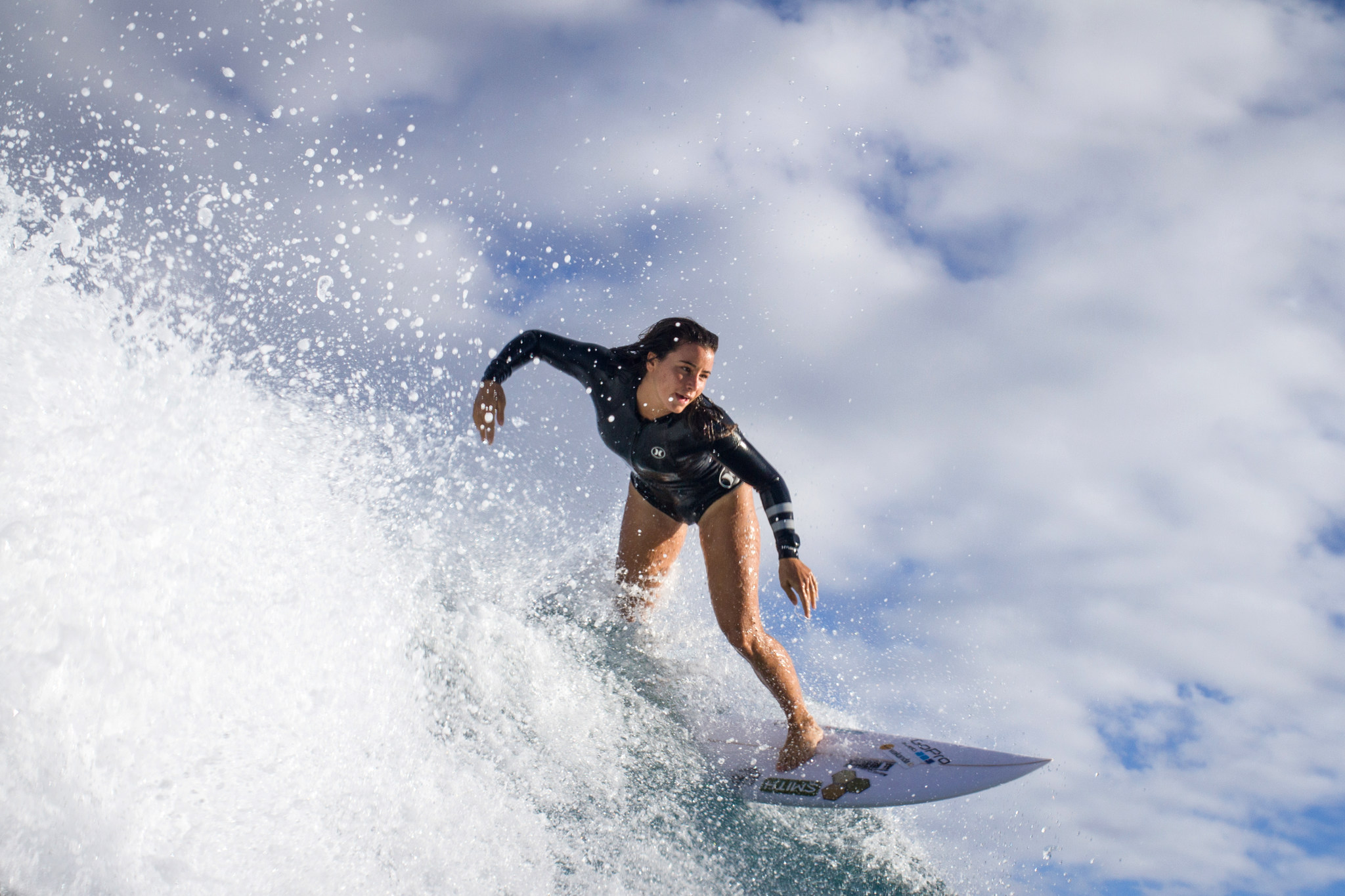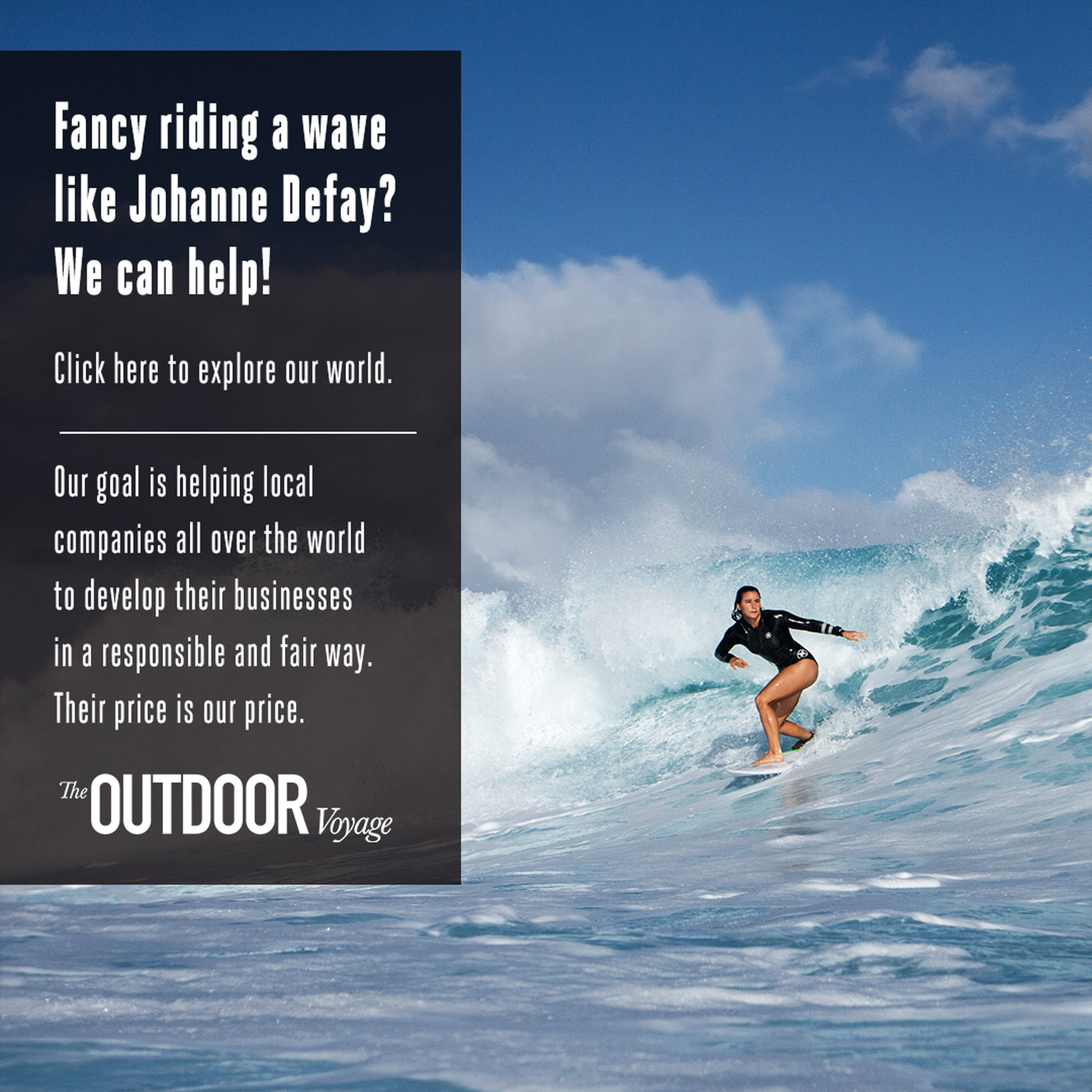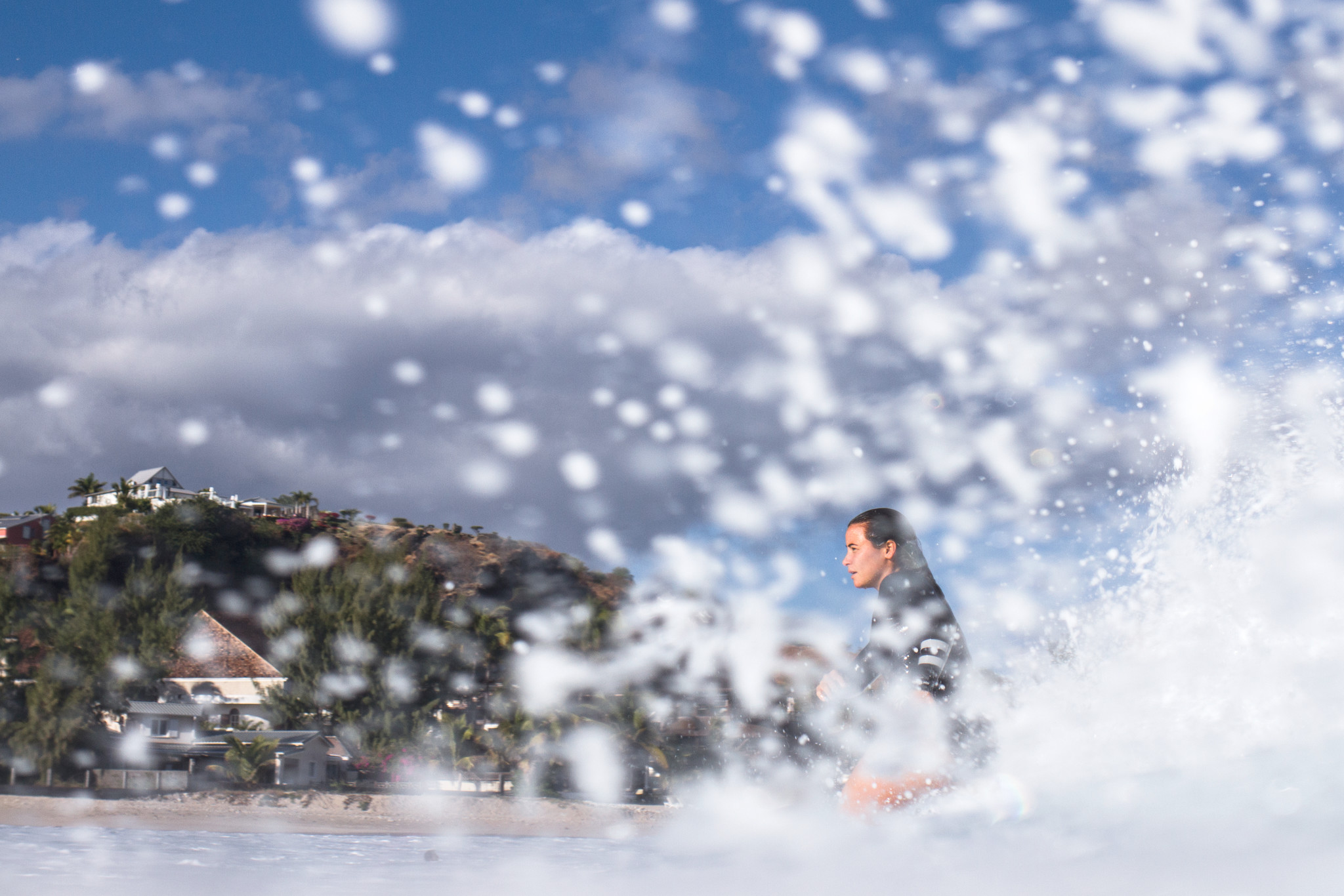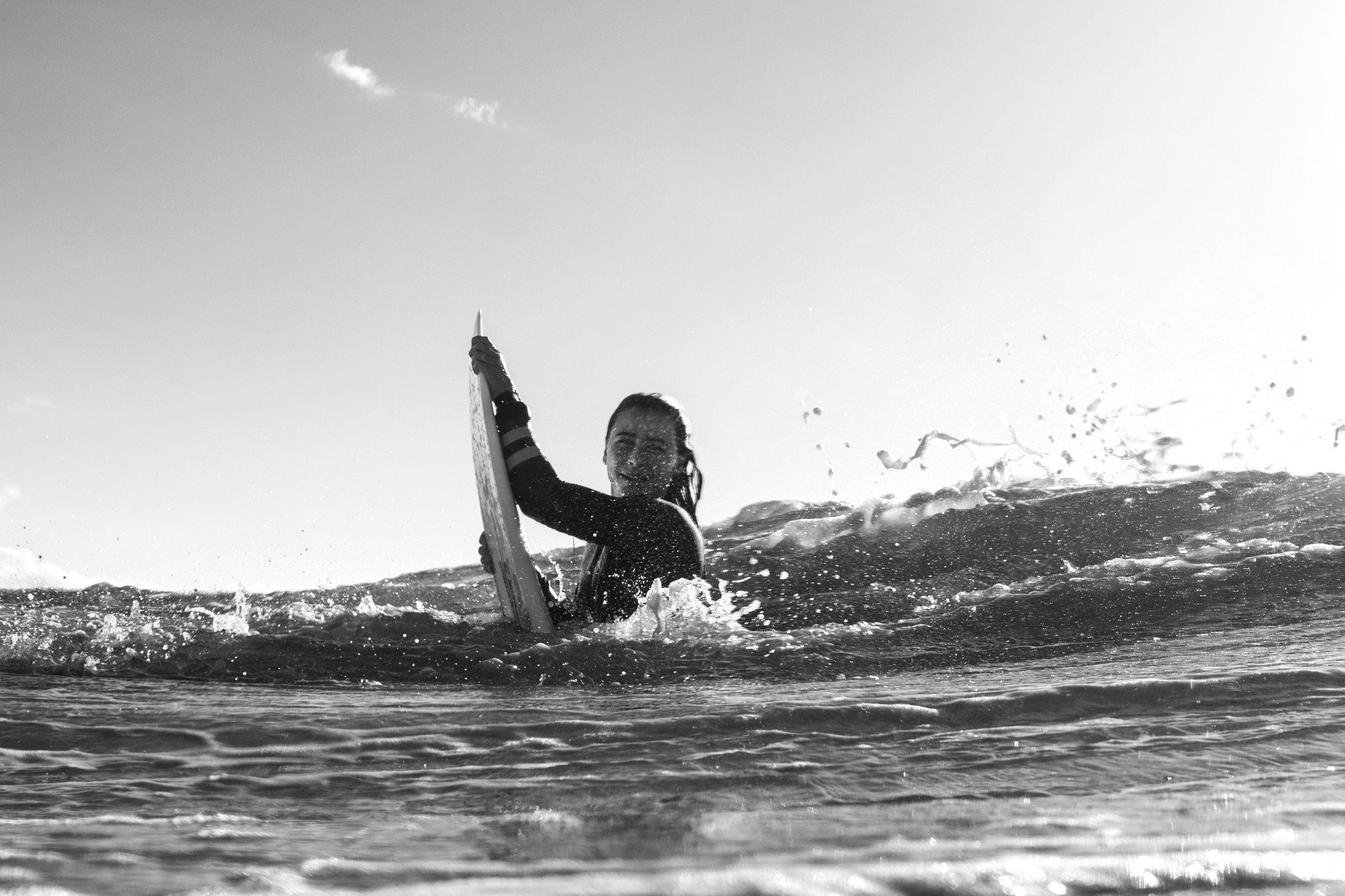Johanne Defay: Surfer No. 5

A surfing star from a young age, Johanne had to make some tough life decisions when her main sponsor dropped her. Now ranked No. 5 in the world, she's making a steady comeback, despite the brands that think she's too athletic for a bikini.
Story by Supriya Vohra and images by Armand Dayde. Originally published in The Outdoor Journal print edition, Spring 2017.
Johanne was 19-years-old when she found herself at a crossroads in life. She had already been surfing professionally for nine years when Roxy, her main sponsor, refused to renew her contract. She had to choose if she wanted to continue surfing, or go back to a ‘normal life’ like the rest of her friends.
“I realised that, you are 19-years-old, you have been following something passionately since you were a child. And now you have to make a choice. Do you want to go back to school? Do you really want to keep surfing? Do you not like it? Do you want a normal life with education and a normal job? So a lot of questions just came up and I was like okay, I think I I really want to continue surfing, because it is a really cool opportunity to have right now,” says the French pro-surfer.

How it All Began
Johanne was 20 months old when her parents decided to shift to Réunion Island, a region of France and an island in the Indian Ocean, east of Madagascar. “Réunion Island is a little bit like Hawaii, but not so American,” Johanne explains. “You have a nicer cultural mix here. People are from everywhere. It’s been so nice to grow up here.”
“The place is mostly known for its amazing trails for running and hiking in the mountains. Surfing became big only 20 years ago, I think. When my dad used to surf there were only two, three people here. It’s grown like crazy now!” she exclaims.
Her father, a doctor and mother, a nurse, always supported her outdoorsy pursuits. “I tried gymnastics for two years when I was very little. But I didn’t enjoy it much. It’s a very strict discipline and I don’t think I have a personality for it.” Johanne shrugs.
“I still have this image in my mind so clear,” she says when asked about her introduction to the sport. “I remember walking on the beach near our house with my father, and there was a surfing lesson going on, and my dad just asked this guy “Hey so my daughter is interested to learn, how can we go about this?” and poof!, that’s how it all began. I was probably eight years old then, and started going for competitions in two years time,” she says. “I just enjoyed surfing so much, and there was such a good dynamic in Réunion Island. There used to be these weekend competitions, and girls of my age were competing, and I loved taking part in them,” she carries on to explain about her competitions.
Her first big moment arrived when she was 12-years-old, and surf brand Roxy decided to sponsor her. She won a bunch of competitions in Réunion Island that got her a ticket to travel all over France, where she met the main Roxy team. The following year, at the age of 13, she became a pro-surfer and started participating in a number of junior events in Europe. She celebrated her 14th birthday in Hawaii, won her first Junior European Champion Title at the age of 15 (she was the youngest to win at the time) and also participated in her first world championship at 15.
She always managed to be amongst the top surfers in every competition, making it to the semis and the finals every time. Consistency was her best friend.
Training Hard and Winning Big
By the time she turned 19 towards the end of 2012, Roxy, her main sponsor decided not to renew her contract. That’s when Johanne decided she really wanted surfing to be part of her life, and she had to take it very seriously. She made a strategy with her parents. With their support and a couple of part-time jobs, she decided to focus on her physical training and participate in her last year of the European Junior Tour. She also decided to give herself two years to do the World Qualifying Series (WQS), which, if she performed well would qualify her for the World Championship Tour (WCT), a coveted championship that qualifies only 17 of the top girls in the world.

Joel Hauss, a friend of her father’s, was a coach for triathletes and trained his son for the Olympics. He along with his friend Nicolas Conradi decided to take it upon themselves to train Johanne to become physically superfit. In the spring of 2013, a few months before the WQS began, she began training in earnest. She would have two to four training sessions a day. She would begin her day by going for a run, have breakfast, go surfing, eat, have a nap, go for a bike ride or skate, and towards the end of the day work on crossfit training.
Within a year, in 2013, she won her third and final European Junior Champion title and qualified for the WCT. Earlier this year, she won the Fiji Women’s Pro and is now ranked overall No. 5 amongst the female surfers in the world. She attributes her success to her training regimen, initially handled by Joel and Nicolas, and then Simon Paillard, her boyfriend and current overall coach. A sports journalist and triathlete based in Réunion Island, Simon was introduced to Johanne via Joel, and started off as her mental strength coach. Joel’s busy schedule coaching his son ended up with Simon becoming her overall coach.
“Training is super essential,” says Johanne. “And you know, it is only in the recent years, six or seven years that surfing has been taken seriously. Surfers are now putting more physical training as part of their routine, something that pro surfers with serious career ambitions should do anyway.”
Sponsors and Female Athletes
Her major sponsors currently include SuperDry and GoPro, and she, along with her boyfriend handle all her social media and communications. No surfing brand has sponsored her yet, despite her being ranked among the top ten surfers in the world for the last three years.

“Brands don't look at female athletes as just athletes. I didn't have a sponsor for four years, and some girls below my level had some big sponsors being given the money that I would never really get,” she explains quite calmly when asked why surf brands haven’t supported her.
“I think as a woman surfer you are judged more than on just the way you are doing your sport. I think brands sometimes get lost about what they want. Do they want just to sell something, are they just looking for perfect bodies in beautiful places or do they want athletes? And I don't think they get as lost for boys,” she says.
“Girls get less pay than boys anyway. And I just feel being judged on something else apart from surfing is not good. And I feel it is kind of tricky, and surfing is a lifestyle, and has not been treated professionally,” she shrugs.
These views may soon change, as the Olympics committee has officially declared that surfing will be included as a sport in the Tokyo 2020 Olympics. When asked if she has Olympic dreams, Johanne’s face lights up. “Yes of course! I would love to compete in the Olympics in 2020! I am just waiting for them to decide the selection process for it,” she says.
She recently completed the Women’s Samsung Galaxy Championship Tour at Maui, Hawaii, finishing the year as the 5th best female surfer in the world.

“The best days are those when the weather is perfect and you get to ride the wave. I’m very lucky and happy to have that all the time,” she signs off with a smile.
Update: At the time of online publishing, May 11, 2018, Johanne Defay's world ranking is listed at #7.
Feature Image © Armand Dayde





Comments ()